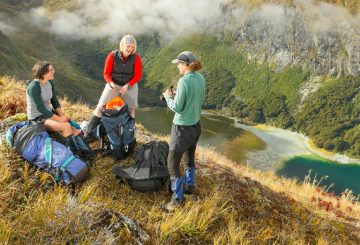Si Michael Begg, isang nangungunang tagapayo sa enerhiya sa Aotearoa, ay nagbahagi ng kanyang mga tip sa kung paano panatilihing mainit at tuyo ang mga tahanan. Ayon sa World Health Organization, ang perpektong panloob na temperatura ay nasa pagitan ng 18 at 20 degree.
Upang mapanatili ang temperatura na ito, mahalaga ang pagkakabukod. Dapat itong mai-install nang tama, nang walang mga puwang. Ang pagkakabukod ay dapat magkaroon ng isang label na nagpapakita ng petsa at uri, na nagpapahiwatig na naka-install ito ng isang propesyonal. Sa ilalim ng sahig, dapat gamitin ang isang layer ng polythene upang maiwasan ang kahalumigmigan, na sinusundan ng pagkakabukod upang harangan ang lamig.
Ang mga bintana ay dapat magkaroon ng dobleng glasing, na may mga kahoy na frame na mas epektibo kaysa sa mas lumang aluminyo. Kung masyadong mahal ito, may mas murang mga kahalili na magagamit sa mga tindahan ng hardware.
Gumagana ang pagkakabukod sa pamamagitan ng pagkuha ng isang layer ng hangin, na rin ang prinsipyo sa likod ng mga linya na kurtina. Kapag sarado ang mga kurtina, itinatak nila ang isang layer ng hangin, na nagbibigay ng karagdagang pagkakabukod.
Mahalaga rin ang bentilasyon, dahil gumagawa tayo ng halos isang litro ng kondensasyon sa pamamagitan lamang ng paghinga habang natutulog tayo. Kung mamasa ang hangin sa isang silid, maaaring tumagal ng dalawang beses na lakas upang maiinit ito.
Sa banyo, mahalaga ang isang extractor fan, at dapat itong maipalabas sa labas. Iminumungkahi ni Michael na buksan ang pampainit ilang minuto bago mag-shower, pagkatapos ay buksan ang extractor fan at bahagyang buksan ang window.
Hindi inirerekomenda ang pinainit na mga rail ng tuwalya, na maaaring nagkakahalaga sa pagitan ng $15 at $30 sa isang buwan upang tumakbo. Habang pinatuyo nila ang mga tuwalya, ang kahalumigmigan na kanilang ginagawa ay maaaring tumagos sa iba pang bahagi ng bahay, na nangangailangan ng mas maraming enerhiya upang alisin.
Kapag naayos ang pagkakabukod at bentilasyon, ang pagpili ng tamang uri ng pag-init ay ang susunod na hakbang. Para sa mas matandang tahanan, epektibo ang isang maliwanag na pampainit Gayunpaman, hindi sila dapat gamitin sa mga silid-tulugan dahil sa mga alalahanin sa kaligtasan. Sa halip, inirerekomenda ang isang kombeksyon o haligi ng langis o panel heater.
Panghuli, ang pagbubukas ng mga kurtina sa maaraw na araw, lalo na sa mga bintana na nakaharap sa hilaga, ay makakatulong upang natural na magpainit ng bahay.





























































